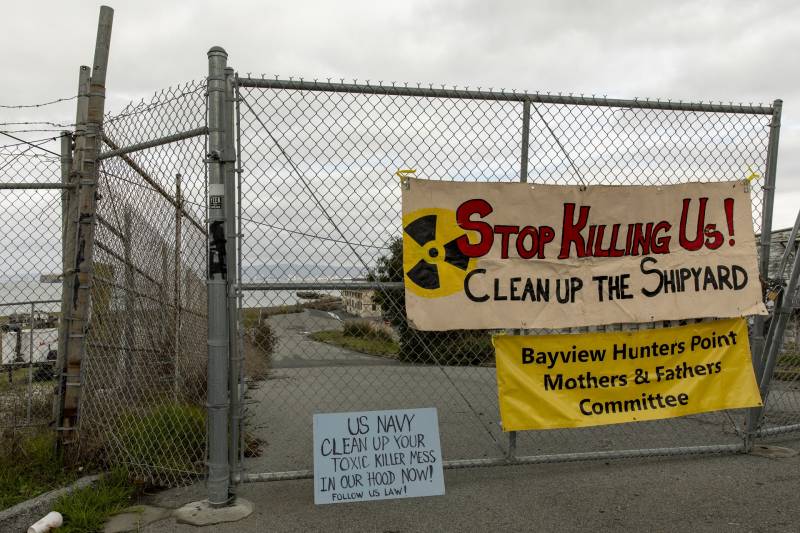According to the lawsuit, the federal agencies overseeing the cleanup have routinely missed project deadlines “without legal or factual justification and failed to assure that the remedies are protective” as mandated by federal law.
Steve Castleman, a supervising attorney in the Environmental Law Clinic at UC Berkeley Law, which is representing Greenaction, said the Navy and EPA have a legal responsibility to retest the entire site because they found contamination in three parcels.
“The Navy should acknowledge that and get on with it,” he said. “The agencies are in no hurry to move to 100% of the testing, and we don’t believe they will ever do 100% testing without a court order.”
The Navy and the EPA have 60 days to respond to the lawsuit, Castleman said.
A representative for the EPA declined to comment, citing the agency’s policy on pending litigation. The Navy did not respond to a request for comment.
Located next to a historically Black neighborhood where more than 35,000 people live, the Tetris-shaped 866-acre shipyard comprises concrete docking bays and abandoned buildings that jut out of San Francisco’s southeast shoreline.
Arieann Harrison, founder and CEO of the Marie Harrison Community Foundation, an environmental justice group serving the Bayview community that is not part of the lawsuit, hopes the case will force the agencies in charge to clean up the site further.
“We are tired of advocating for them to do the right thing, and we’re hoping they do the right thing,” she said. “They need to have oversight and be more transparent in documenting and presenting that information to the community.”
In the middle of the last century, the Navy used the site to decontaminate ships after atomic bomb tests, a process that contaminated the soil with radionuclides, heavy metals and petroleum fuels, among other toxic compounds.
Officials have found radioactive material several times in recent years.
In December, the Navy said it detected a radioactive chip of glass smaller than a dime during routine testing at the site. That came a few months after the Navy reported finding a radioactive deck marker, the size of a silver dollar, that once guided ships at night.
In 2021, the Navy found nearly two dozen samples at the site contaminated by Strontium-90, a radioactive isotope that can cause cancer. And in September 2018, the agency recovered another radioactive deck marker, more than a decade after the federal government declared the area safe and free of radioactive waste.
The EPA has alleged that Tetra Tech EC, a contractor hired by the Navy to conduct remediation activities at the site, falsified reports during the cleanup project. In 2018, two former Tetra Tech supervisors pleaded guilty to federal fraud charges for falsifying records and were sentenced to prison. The company has denied wrongdoing and said the two employees were solely responsible for the fraudulent actions.
Without a thorough cleanup, environmental advocates worry that rising seas — a result of human-caused climate change — will push up groundwater levels and come in contact with the radioactive materials. They fear the contaminated groundwater could bubble up, come in contact with people and enter San Francisco Bay.
“The stakes are very high,” Castleman said.
In January, the U.S. Navy acknowledged for the first time in its latest five-year review of the cleanup that potentially toxic groundwater could surface at the site in just over a decade.
